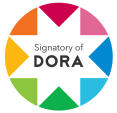DIAGNÓSTICOS EN TECNOLOGÍAS DE INFORMACIÓN PARA EL LOGRO DE LOS OBJETIVOS ESTRATÉGICOS EN LAS ORGANIZACIONES
DOI:
https://doi.org/10.36790/epistemus.v12i25.88Palabras clave:
diagnóstico tecnológico, arquitectura empresarial, tecnologías de información, objetivos estratégicosResumen
Los diagnósticos tecnológicos son un campo que se enfoca en aconsejar a otras organizaciones como usar las tecnologías de información para conseguir sus objetivos estratégicos. A través del servicio de diagnóstico en tecnologías de la información, se pretende detectar las necesidades y oportunidades de una organización. Realizar un análisis de las diferentes capas o dimensiones de la Arquitectura Empresarial: Negocio, Datos, Aplicaciones, Infraestructura Tecnológica, Recursos Humanos e Integración; las cuales se ven evidenciadas en tres etapas: Inicio, Diagnóstico y Proyección, cada una de ellas realiza actividades encaminadas a mejorar el buen funcionamiento de la organización. El diagnóstico permite dejar de invertir mucho dinero y tiempo en tecnología sin obtener los resultados deseados. A través de metodologías especializadas como la Arquitectura Empresarial, se resolverán problemas y se aprovecharán las oportunidades presentes en el negocio, apoyándose en las tecnologías de la información. La organización obtendrá una alineación entre las metas del negocio...
Descargas
Citas
Arango Serna, L. S. (2010). Arquitectura Empresarial. Una visión general. Revista de Ingenierías. Universidad de Medellín, 19(16), 101-111.
CMMI. (2010). Mejora de los procesos para el desarrollo de mejores productos y servicios (Tercera ed.).
Escuela de Organización Industrial. (2014). PRINCE2- Otra metodología para la gestión de proyectos. Obtenido de http://www.eoi.es/blogs/mcalidadon/2014/12/20/prince2-otra-metodologia-para-la-gestion-de-proyectos/
Fernández, P. S. (2017). Comparación de marcos de trabajo de arquitectura empresarial. La Habana, Universidad José Antonio Echeverría, CUJAE.
Ferrer, R. L. (2014). Definición de procesos para gestionar alcance y comunicaciones en proyectos de diagnóstico organizacional enmarcados por la arquitectura empresarial.Tesis de Maestría, La Habana, Universidad de Ciencias Informáticas. Recuperado el 2017
Ferrer, R. L. (2015). Definición de una estrategia de transición de la arquitectura empresarial en un entorno industrial-biotecnológico. RCCI.
IBM Knowledge Center. (2014). Rational Systems Architect 11.4.2. Recuperado el 2018, de https://www.ibm.com/support/knowledgecenter/es/SS6RBX_11.4.2/com.ibm.sa.dodaf.doc/topics/t_creadodafprds.html
IPMA. (2017). IPMA, International Project Management Association.
ISACA. (2012). COBIT 5, Un Marco de Negocio para el Gobierno y la Gestión de las TI en la Empresa. Reino Unido.
ISO/IEC/IEEE 42010. (s.f.). Systems and software engineering.
Lankhorst, M. (2013). Enterprise Architecture al work: Modelling, Communication and Analysis. DOI: https://doi.org/10.1007/978-3-642-29651-2
Osorio, A. F. (2014). FEAF The Federal Enterprise Architecture Framework (FEA). Goverment Enterprise Architecture (GEA).
Project Management Institute. (2017). A Guide to the Project Management PMBOK 6 (Sexta ed.). Recuperado el Noviembre de 2017
Rodríguez, M. (2005). Diagnóstico Organizacional. México: Alfaomega Grupo editor.
Tesoro Enterprise Architecture Framework. (2015). Obtenido de https://chae201511700812108.wordpress.com/2015/05/01/tesoro-enterprise-architecture-framework/
The Open Group. (2013). Guía de Bolsillo TOGAF 9.1. Reino Unido: Van Haren Publishing.
Universidad de Ciencias Informáticas. (2017). Mejora de Procesos de Software. Recuperado el 2018, de https://mejoras.prod.uci.cu
Zachman, J. (2008). John Zachman ́s Concise Definition of The Zachman Framework. Zachman International Inc. Recuperado el 2017
Publicado
Cómo citar
Número
Sección
Licencia

Esta obra está bajo una licencia internacional Creative Commons Atribución-NoComercial-SinDerivadas 4.0.
La revista adquiere los derechos patrimoniales de los artículos sólo para difusión sin ningún fin de lucro, sin menoscabo de los propios derechos de autoría.
Los autores son los legítimos titulares de los derechos de propiedad intelectual de sus respectivos artículos, y en tal calidad, al enviar sus textos expresan su deseo de colaborar con la Revista Epistemus, editada semestralmente por la Universidad de Sonora.
Por lo anterior, de manera libre, voluntaria y a título gratuito, una vez aceptado el artículo para su publicación, ceden sus derechos a la Universidad de Sonora para que la Universidad de Sonora edite, publique, distribuya y ponga a disposición a través de intranets, internet o CD dicha obra, sin limitación alguna de forma o tiempo, siempre y cuando sea sin fines de lucro y con la obligación expresa de respetar y mencionar el crédito que corresponde a los autores en cualquier utilización que se haga del mismo.
Queda entendido que esta autorización no es una cesión o transmisión de alguno de sus derechos patrimoniales en favor de la mencionada institución. La UniSon le garantiza el derecho de reproducir la contribución por cualquier medio en el cual usted sea el autor, sujeto a que se otorgue el crédito correspondiente a la publicación original de la contribución en Epistemus.
Salvo indicación contraria, todos los contenidos de la edición electrónica se distribuyen bajo una licencia de uso y Attribution-NonCommercial-ShareAlike 4.0 International (CC BY-NC-SA 4.0) Puede consultar desde aquí la versión informativa y el texto legal de la licencia. Esta circunstancia ha de hacerse constar expresamente de esta forma cuando sea necesario.

























